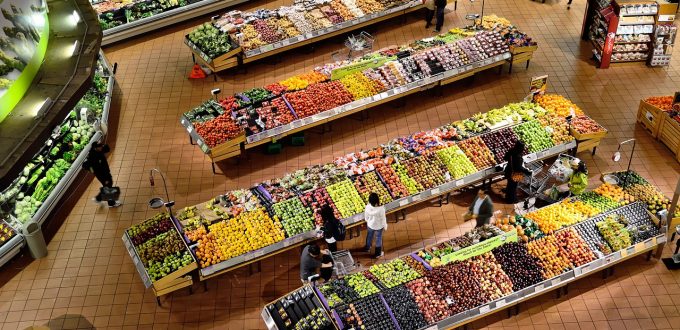1. Make a shopping list
I use an app on my iPhone to make my shopping list. I list all products that I need to buy for the week ahead and make sure I stick to the list when I’m out shopping. Organising the products you need by their location in the store is also a good idea – this way you will stay focused and avoid wandering around the store looking for things.
2. Meal plan
I try to plan my meals for the week ahead. Meal planning makes it easier to create a shopping list; this way I know what items I need to buy. Although I’m fairly flexible with my meal planning, I have a good idea of what meals I’ll be making, which helps exclude the products I won’t get to use in a dish from my shopping list.
3. Use your loyalty card to collect points
Whenever I shop in the store that has a loyalty program, I always scan my loyalty card to get the points for the purchase I’ve made. Normally, you can exchange your points into vouchers on a quarterly basis – you can use them to pay with in store or online.
4. Set a pattern
I find that doing my food shopping once a week over the weekend has helped me save a lot on my shopping bill. I do my food shopping on a Sunday, and I take my time to shop around to ensure I get the best value on all products that go into my shopping basket. I don’t like rushing – I’d like to avoid grabbing the first item I set my eyes on which tends to be more expensive than it needs to be.
5. Look out for reduced items
Many stores will try to get rid of products that are close to their sell-by dates and sell them really cheap. Why pay £1.00 for a loaf of bread if you can get it for £0.10 and freeze it. Bargain! This may not be for everyone, but it’s definitely something to consider doing occasionally.
6. Buy in bulk
Personally, I don’t usually buy in bulk because (1) I have limited storage space and (2) I find that I tend to eat more when I buy in bulk. What can I stay, I simply cannot resist the temptation of eating three bars of chocolate all in one go! That said, if there is something on offer that I buy regularly (2-for-1, buy one get one free), I normally go for it as it saves me money over time.
7. Take a set amount of cash with you
If you have a £20 budget to spend on food, take a £20 note with you (and some spare change just in case) and leave the rest at home, as simple as that. This way there’s no way you can overspend and impulse buy as you simply won’t have enough cash to pay with at the checkout.
8. Downgrade to store own brands
I have saved a ton of money by downgrading to store own brands. I buy ASDA’s own rice, pasta, beans and some other products, and believe me when I say they taste the same as branded ones. I must admit though, I won’t give up buying some branded products as nothing can beat Hellmann’s mayonnaise or Nestle’s Milkybar, but I’m all up for trying cheaper alternatives if there’s no difference in taste.
9. Price compare
There are websites out there that allow you to compare food prices. The one that I use is MySupermarket. I normally do all my food shopping in ASDA which is just around the corner from me, but there are some products I still get from Tesco’s on my way home from work as they are cheaper there.
10. Do not shop on an empty stomach
This simple technique works wonders as my eyes are bigger than my stomach. I am less likely to impulse buy when I do my food shopping on a full stomach.

